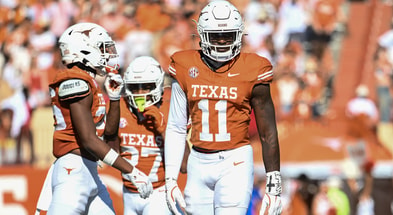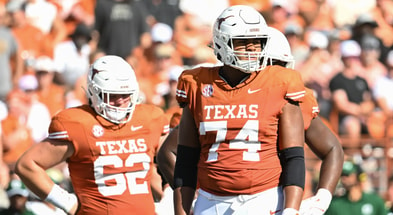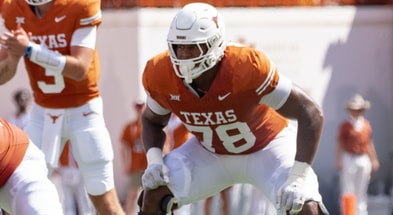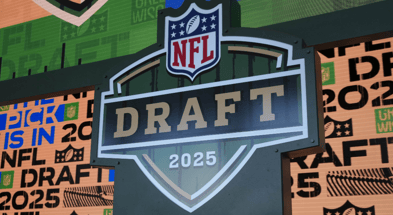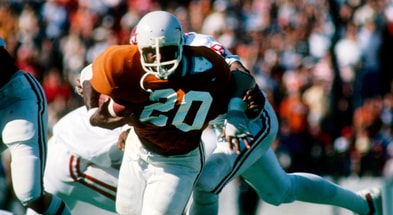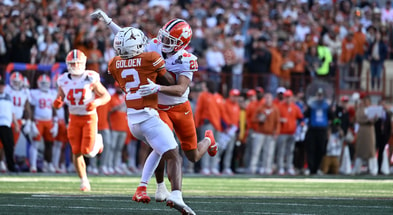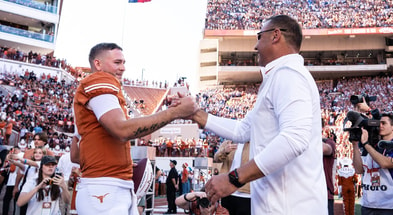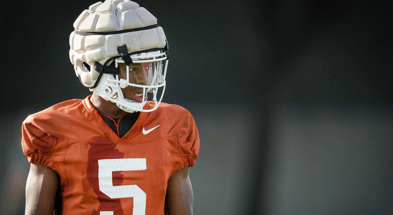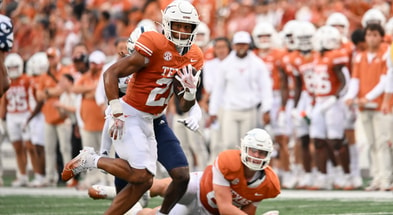Preparing the 2025 Texas Longhorns requires a different process for each player

In the past, Texas football head coach Steve Sarkisian has spoken about the differences in how a coaching staff prepares players of varying calibers and experience levels for the season ahead.
[Join Inside Texas TODAY and get FOUR MONTHS for just ONE DOLLAR!]
The basics are fairly easy to comprehend: more talented and veteran players take less time to ease in and can afford to focus on more micro-based goals in the offseason, while players on the opposite side of the spectrum need to be ramped up through a much longer process.
This Monday, Sarkisian answered a question about the steps it takes to get players ready for Week 1 of the season while also focusing on their long-term development.
“The foundation that we lay at the start of training camp or the start of spring ball for some of the veteran players—the Michael Taaffes and Anthony Hills, DJ Campbell—that foundation gets formed a lot quicker than a player that just arrived or that’s in his freshman year,” Sarkisian said. “And so as we move through spring ball, as we move through camp, the older player, the veteran player, the guy who has the experience, the Ethan Burkes of the world, right? The Trey Moores of the world. They can stack bricks a lot quicker and get themselves ready to go for what Week 1 looks like.”
Texas has a lot of new faces this offseason (30 and counting) who need to adjust to the playbook, scheme, and intensity of playing in the SEC. Because of that, these players may have different goals than those of returning starters or expected contributors.
Sarkisian has spoken before about needing some players ready for Week 1 and others ready for later in the season. Last year, that meant having 39 players between the offense and defense play 10 or more snaps at Michigan in Week 2. This year, there’s no Week 1 jitters-erasing Colorado State game; newer players will be thrown into the gauntlet at Ohio State to kick off the year.
On the other hand, Texas used 35 players (give or take a few snaps) against Ohio State to close out the year, a more condensed roster that saw some players elevate their roles tremendously.

This chart shows every player who played 15 more snaps against OSU than they did against Michigan. You can chalk the differences in WR snaps up to the injuries of Isaiah Bond and Matthew Golden, but the defensive side of the ball and the RB position are intriguing.
Long term, Sarkisian relied more on a singular RB to carry the brunt of the work late in the season. That meant Wisner took 72% of the snaps in the game against OSU.
Sark also condensed playing time for secondary players at both safety and linebacker. While cornerbacks mostly used the same four players and the defensive line worked in a rotation, Texas found its main four at LB and S later and stuck with them.
These are the players who lost snaps (minimum 10 snaps lost, not including injuries to Bond, Golden, and Derek Williams):

Campbell’s reduction mostly came down to how OL coach Kyle Flood was seeing the game, but the other four players are interesting to monitor.
Gbenda, Holmes, and Finkley were veterans on the defense who were ready to play in Week 2 but weren’t utilized nearly as much late in the season. These are the types of players Sarkisian was referring to: the foundation had already been formed, but talent in their rooms (Lefau, Colin Simmons) brought their snaps down as the season went on.
Top 10
- 1New
Donald Trump blasts NFL
Teams for not drafting Sheduer Sanders
- 2
Jaden Rashada
Makes transfer commitment
- 3
Kim Mulkey
Takes victory lap on South Carolina
- 4Hot
2nd Round NFL Mock Draft
QBs under microscope
- 5
Shedeur Sanders reacts
To going undrafted in 1st round
Get the On3 Top 10 to your inbox every morning
By clicking "Subscribe to Newsletter", I agree to On3's Privacy Notice, Terms, and use of my personal information described therein.
So, there are a few buckets of players to look at here. On the positive regression side of things, Texas targeted talented but less experienced linebackers and safeties to make an impact later in the season. After all, Lefau and Hill were both sophomores, and Mukuba was a transfer.
That sounds a lot like three players for 2025: Trey Moore, Derek Williams, and Xavier Filsaime.
Moore is learning a new position and has fewer reps at Will LB than Lefau does, so he may not see the Week 1 snaps you’d expect from a player of his talent level. But as the season progresses, his impact will seemingly be felt more and more, similar to how he performed in 2024.
At safety, Williams was a starter against Michigan but suffered a season-ending injury against Oklahoma. He’ll need to be slowly worked back in, but the talent is there for him to join Taaffe at safety. The same goes for Filsaime, who is a bit more raw but has plenty of natural skills.
As for offensive injuries, similar to Golden and Bond last year, players like Parker Livingstone and Emaree Winston may not see a ton of early game time but could be huge parts of a late-season push.
On the other hand, the players who most need to be ready for Week 1 are mostly on the offensive line and Arch Manning. However, those positions usually stay put unless an injury occurs, and everyone in Texas’ camp knows Manning is ready. A few players who need to be ready to play at a championship level in Week 1 are Wisner, Burke, and Jaylon Guilbeau.
All veterans in their respective rooms, this is a year when they need to be ready to go as soon as possible.
While these players will all be vital parts of this year’s team, it’s easy to see a world where players behind them come knocking for snaps as Texas nears the postseason. Kobe Black is an extremely talented CB who is taking over Holmes’ role in 2025. Burke is flanked by Colton Vasek, Zina Umeozulu, and Lance Jackson, while Wisner has Baxter and Gibson behind him. You could see the opposite effect happen in the running back room: starting with a bell-cow and moving into a strong committee. Even if those snaps go from 55 to 40, a regression in playing time late in the season could be possible for all three of these players.
Either way, the ramp-up process must move fast for those three, as well as the entirety of the offensive line. Thankfully for the Longhorns, the three games after the Ohio State matchup are against San Jose State, UTEP and Sam Houston State. These are games where freshmen and long-term elevators will also see their reps increase, as Sarkisian will be able to assess the talent level of players that he wasn’t quite comfortable playing against Ohio State.
[Order THE LONGHORN ALPHABET today and teach your little ones the A to Z’s of Texas Football!]
PAfter SHSU, though, Texas plays a gauntlet October schedule, playing three SEC away games (one being Florida) and the Red River Shootout. Texas needs CFP-level play from the leaders of some of the youngest and most inexperienced positions on the team if it wants a chance at taking down the defending national champions, and to work its way out of that second full month undefeated.


